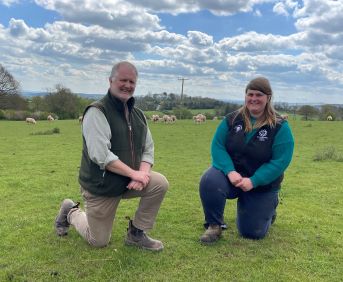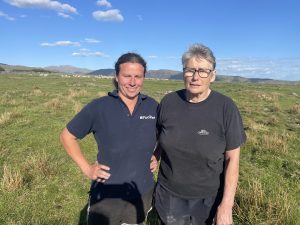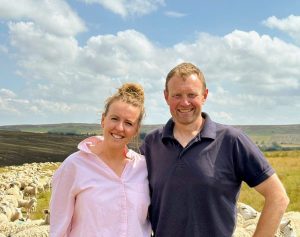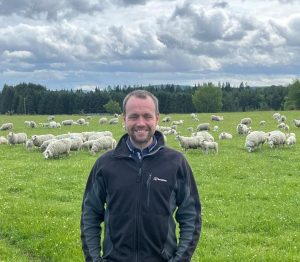with thanks to Robert and Imogen Manning, The Hill Farm.
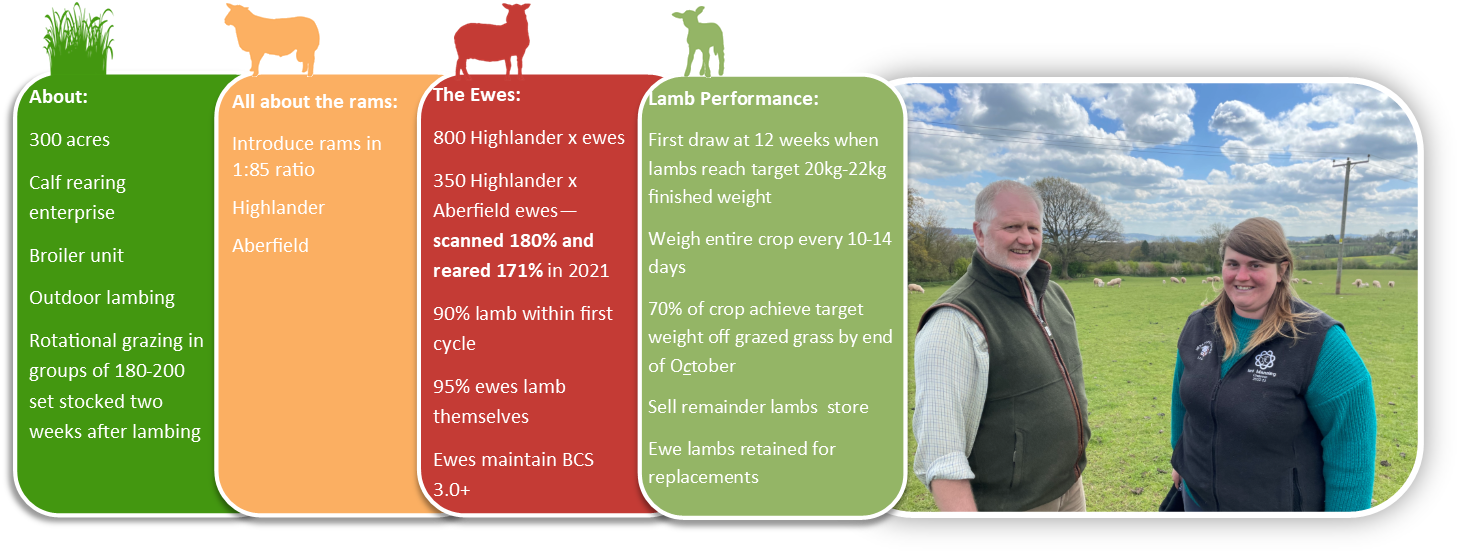
Operating a 1,000-ewe low input, high output unit managed by one person and two Huntaway dogs is the way towards establishing a future fit, sustainable and profitable enterprise without payments says Imogen Manning who farms with her father, Robert near, Ledbury. “We have agreed a business plan and our Highlander cross Aberfield genetics from Innovis are already delivering, while improving our grassland and forage crop management is a work in progress.
“The Highlander cross Aberfields scanned 180% in 2021 and went on to rear 171%. The entire flock lambs outdoors from 10 April apart from triplets which were lambed for the first time in polytunnels this season and then turned out shortly afterwards. Fertility is reflected in the fact we introduce one ram to 85 ewes, we don’t use teasers and almost 90% lamb within the first cycle.
“I’ve help from just one other person at lambing, we check four times a day and find 95% of ewes lamb themselves, they’ve plenty of milk and demonstrate good maternal traits. After completing lambing, I leave them in the same paddocks set stocked for two weeks before mobbing up into groups of 180 to 200 ewes and lambs and introducing to rotational grazing; I move them on according to paddock size, and if necessary, introduce a fence. If grass grows away then we can shut up for silage,” explains Imogen who after graduating in agriculture and two years work experience in New Zealand, returned home to realise her ambition to farm.
“I make the first draw at 12 weeks by when lambs are reaching targeted 20kg to 22kg finished weight. I’m a firm believer in monitoring growth, weigh the entire crop every 10 to 14 days and draw weekly throughout the season to supply ABP; we’re fortunate to have a nearby collection centre.
“70% of the crop is achieving target weight off grazed grass by the end of October at which point I like to the clear the unit and sell the remainder in the store ring in order to make way for grass for flushing, tupping and for the ewe lambs.” The entire crop is traded apart from ewe lambs retained for replacement purposes selected for growth – 35kg at six months, and 56kg at 19 months before lambing as shearlings.
“Ewes are maturing at an average 70kg, they’re able to maintain themselves in body condition score 3.0 + throughout the year from forage-based diets including a silage, whole crop barley, mineral mix while overwintered in polytunnels to protect the grazing. They’re lasting for five to six lamb crops, performance which all adds up towards efficiency and reduced methane emissions.”
The family farm was dedicated to arable until a decade ago when Robert Manning, then a one-man band, decided 300 acres didn’t offer sufficient critical mass to remain profitable in cropping, and with the next generation in mind, agreed to turn over to grass and invest in sheep. He says: “I initially stocked with a 200 ewe Lleyn flock my neighbour was dispersing, however breeding these ewes to a Continental ram and then lambing outdoors proved to be seriously hard work.”
The Manning’s journey continued when Robert was introduced to Innovis and the Highlander. Imogen explains: “2019 and we decided to introduce the Aberfield and establish a criss cross breeding strategy with the hardy Highlander ewe to further enhance flock performance as we continue to expand and hit our 1,000-ewe target by 2025.”
In the meantime, the Mannings are continuing their cost cutting exercise. “So far, we’ve halved the area of spring grazing to which I’ve traditionally applied 2cwt N/acre. We’re now reseeding with a mid to late perennial ryegrass herbal mix and we’re keeping our options open when it comes to stubble turnips or forage rape,” he says. Imogen adds: “We’d like to invest in a decent handling system, continue to upgrade the fencing and introduce water to every field while further improving the flock’s genetics.”
